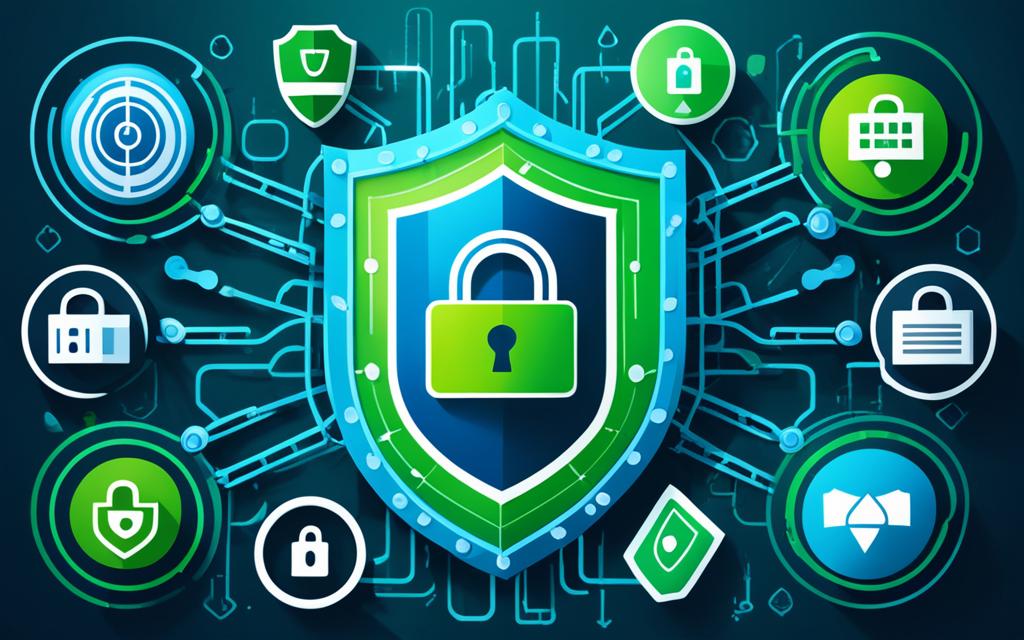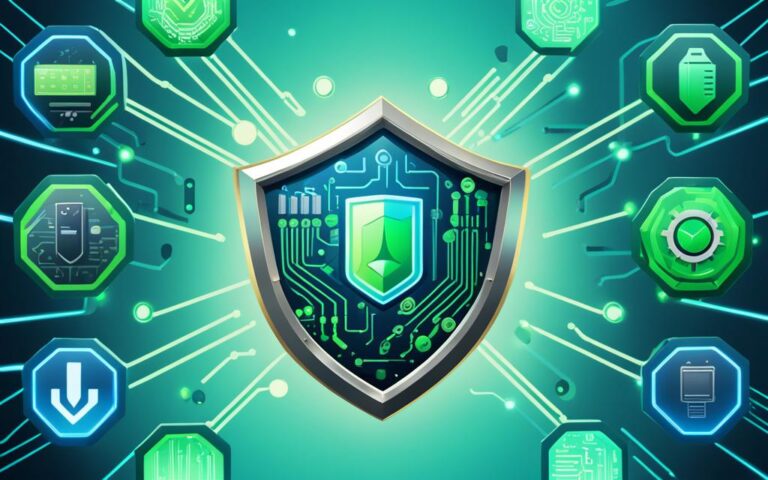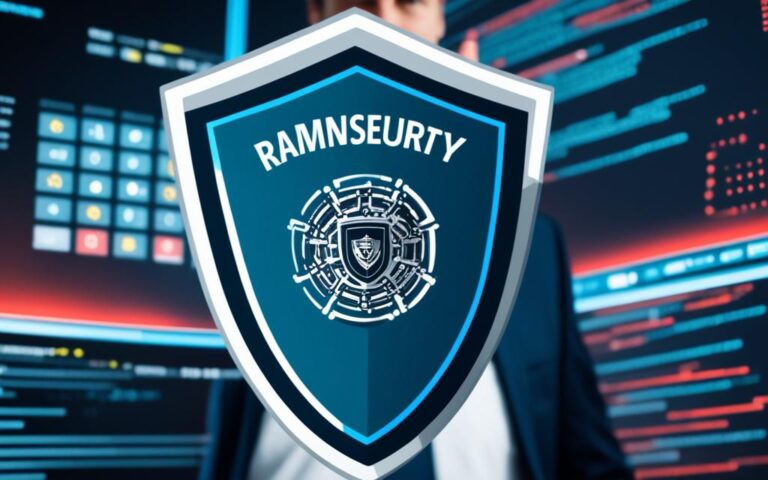Strategies for Comprehensive Ransomware Eradication
In today’s digital landscape, ransomware has become a pervasive threat, targeting organizations of all sizes and industries. The economic and reputational consequences of a ransomware attack can be devastating. To safeguard your organization’s digital assets, it is crucial to implement comprehensive ransomware prevention strategies and effective techniques for recovery.
This guide, developed by CISA and MS-ISAC, provides industry-leading best practices and recommendations for preventing and responding to ransomware incidents. Drawing on insights from cybersecurity experts at CISA, MS-ISAC, NSA, and FBI, this guide equips organizations with the knowledge and tools necessary to combat this ever-evolving threat.
By following the strategies outlined in this guide, you can fortify your organization’s defenses and reduce the likelihood and impact of a ransomware attack.
Understanding Ransomware and Data Extortion
Ransomware is a destructive form of malware that encrypts files and demands a ransom for decryption. It has become a significant threat to organizations worldwide, as cybercriminals constantly adapt their tactics to maximize their gains. In recent years, they have started employing a new technique known as data extortion, where they not only lock the victim’s files but also exfiltrate sensitive data. This double extortion tactic adds another layer of complexity and risk to the ransomware landscape.
When ransomware operators exfiltrate data, they threaten to release it publicly or sell it on the dark web if the ransom is not paid. This places organizations in a difficult position, as they must not only recover their encrypted files but also prevent the exposure of sensitive information that could have severe legal, financial, and reputational consequences.
This guide provides comprehensive insights into both ransomware and data extortion incidents, equipping organizations with the knowledge and strategies necessary to protect their business processes. By understanding these threat vectors and their implications, companies can proactively implement robust cybersecurity measures and respond effectively if targeted.
The Risks and Impacts of Ransomware and Data Extortion
Ransomware attacks and data extortion pose significant risks to organizations of all sizes and industries. Some of the key risks and impacts include:
- Financial Loss: The demand for hefty ransom payments can strain an organization’s financial resources, particularly if they haven’t implemented adequate cybersecurity measures or backups.
- Data Breach: In data extortion cases, the exfiltrated data may contain sensitive customer information, trade secrets, or intellectual property, leading to serious legal and compliance issues.
- Reputational Damage: The release or sale of sensitive data can negatively impact an organization’s brand reputation and erode customer trust and loyalty.
- Operational Disruption: Ransomware infections can cripple critical systems and disrupt business operations, leading to significant downtime and potential revenue losses.
It is crucial for organizations to build a strong defense against ransomware and data extortion, implementing preventive measures and establishing thorough incident response plans to minimize the impact of these threats.
Double Extortion Tactics
Ransomware operators have embraced the double extortion tactic to increase their leverage over victims. By stealing sensitive data prior to encrypting it, they hold organizations at ransom on two fronts: the need to regain access to their encrypted files and the fear of the confidential information being exposed.
“The double extortion tactic has proven to be highly profitable for cybercriminals, as it exploits organizations’ concerns about data privacy and regulatory compliance. It forces victims to make difficult decisions, often with limited time, to prevent the potential fallout from data leaks.” – Cybersecurity Expert
The double extortion tactic has been particularly effective because it targets organizations’ fears and vulnerabilities, forcing them to weigh the financial cost of paying the ransom against the potential consequences of data exposure. This added pressure has led to an increase in ransom payments, making ransomware attacks even more lucrative for threat actors.
Ransomware and Data Extortion Prevention Best Practices
In order to protect your organization from costly ransomware incidents and data extortion attempts, it is crucial to implement effective prevention measures. By following these best practices, you can significantly reduce the likelihood of falling victim to these cyber threats.
1. Prepare for Potential Attacks
Being proactive is key to preventing ransomware incidents. Start by conducting a thorough risk assessment to identify potential vulnerabilities in your systems and processes. Ensure that your staff is trained on cybersecurity best practices and can recognize common attack vectors, such as phishing emails or malicious attachments. Regularly backup your data and store it offline to minimize the impact of a ransomware incident.
2. Implement Robust Security Measures
Secure your organization’s network and endpoints by implementing robust security measures. This includes using reliable endpoint protection platforms (EPP) or endpoint detection and response (EDR) solutions to monitor and manage security for remote devices. Employ network segmentation to isolate critical assets and limit the spread of ransomware within your network. Additionally, utilize advanced email protection solutions that can detect and block phishing attempts.
3. Stay Up-to-Date with Software and Patch Management
Regularly update your software and apply security patches to ensure that your systems are protected against known vulnerabilities. Many ransomware attacks exploit outdated software or unpatched vulnerabilities to gain access to organizations’ networks. Implement a comprehensive patch management process that includes regularly monitoring for updates and promptly applying them to all systems and devices.
4. Utilize Multi-Factor Authentication (MFA)
Implementing multi-factor authentication (MFA) adds an extra layer of security to your organization’s accounts and systems. By requiring users to provide multiple authentication factors, such as a password and a unique code generated by a mobile app, you can significantly reduce the risk of unauthorized access and potential ransomware attacks.
5. Engage in Information Sharing and Collaboration
Join sector-based information sharing and analysis centers (ISACs) and collaborate with peer organizations to stay updated on the latest threat intelligence. Information sharing and collaboration can help you identify emerging ransomware trends, prevent potential attacks, and respond more effectively to incidents. Engage with trusted cybersecurity authorities, such as CISA, to gain access to critical information and services.
“Prevention is always better than cure. By implementing these best practices, organizations can minimize the risk of ransomware incidents and protect their valuable data from extortion attempts.” – Cybersecurity Expert
| Best Practices for Ransomware Prevention | Impact |
|---|---|
| Regularly backup critical data | Minimizes the impact of ransomware incidents |
| Train staff on cybersecurity best practices | Reduces the likelihood of falling victim to phishing attempts |
| Implement network segmentation | Limits the spread of ransomware within the network |
| Utilize advanced email protection solutions | Blocks phishing attempts and malicious attachments |
| Regularly update software and apply patches | Protects against known vulnerabilities |
| Implement multi-factor authentication | Reduces the risk of unauthorized access |
| Engage in information sharing and collaboration | Stays updated on the latest threat intelligence |
Implementing these best practices will significantly enhance your organization’s resilience against ransomware and data extortion attempts. By prioritizing prevention and investing in robust security measures, you can safeguard your valuable data and protect your business from potentially devastating cyber incidents.
Ransomware and Data Extortion Response Checklist
Part 2 of the guide provides a comprehensive checklist of best practices for effectively responding to ransomware and data extortion incidents. By following these guidelines, organizations can minimize the impact of such attacks and mitigate potential data breaches. The checklist covers various aspects of incident response, including:
- Data breach notification procedures
- Incident response plan
- Communications plan
Implementing a well-defined incident response plan is crucial to ensure a prompt and coordinated response to ransomware incidents. This includes establishing clear protocols for incident detection, containment, eradication, and recovery. Having a comprehensive communications plan in place allows for efficient internal and external communication during an incident, enabling timely updates and effective collaboration with relevant stakeholders.
In addition to these response measures, organizations should also consider the importance of implementing a zero trust architecture. This approach ensures that every user and device is treated as potentially compromised, requiring continuous verification of their identity and authorization. By adopting a zero trust mindset, organizations can prevent unauthorized access and limit the impact of ransomware attacks.
Sample Table: Incident Response Checklist
| Checklist Item | Description |
|---|---|
| Data breach notification procedures | Develop procedures for assessing the scope and impact of a data breach, identifying affected individuals, and complying with legal obligations for timely notifications. |
| Incident response plan | Create a detailed plan that outlines the roles and responsibilities of the incident response team, steps for containing and mitigating the incident, and methods for restoring systems and data. |
| Communications plan | Establish a communication strategy to share timely and accurate updates with internal stakeholders, customers, partners, regulatory bodies, and law enforcement agencies. |
| Zero trust architecture | Implement a zero trust approach to ensure continuous verification of user identity and device authorization, minimizing the risk of unauthorized access and lateral movement within the network. |
Importance of Data Backups and Maintenance
Maintaining offline, encrypted backups of critical data is crucial in mitigating the impact of ransomware incidents. In the event of an attack, having backups ensures that organizations can recover their data without having to pay the ransom. However, simply creating backups is not enough; regular maintenance and testing are essential to ensure their effectiveness.
Regularly testing the availability and integrity of backups is essential in a disaster recovery scenario. Organizations should perform periodic tests to verify that the backup data is accessible, complete, and can be restored successfully. This helps identify any potential issues or discrepancies in the backups, allowing organizations to address them promptly.
The guide recommends following the 3-2-1 rule of data backup best practices. This rule suggests keeping three separate copies of data on two different types of storage media, with one copy stored offline. By adhering to this rule, organizations minimize the risk of losing data due to ransomware attacks or other catastrophic incidents. Offline backups are particularly important as they are not connected to the network and are therefore immune to attacks.
In addition to regular backups, organizations should also consider maintaining “golden images” of critical systems. These images are preconfigured and kept up to date, allowing for quick deployment in the event of a system rebuild. This helps minimize downtime and get essential systems back up and running faster.
By implementing these data backup best practices and regularly maintaining backups, organizations can significantly improve their ability to recover from ransomware incidents and minimize the potential impact on their operations.
Securing Networks and Email Systems
Implementing network segmentation is vital in limiting the spread of ransomware within a network. By dividing the network into smaller segments, organizations can effectively isolate and prevent the spread of ransomware, mitigating the potential damage caused.
Furthermore, enhancing email protection measures is essential for preventing phishing attacks that often serve as the entry point for ransomware infections. Organizations should educate their employees about the importance of avoiding emails from unknown senders and implementing SPF (Sender Policy Framework), DKIM (DomainKeys Identified Mail), and DMARC (Domain-based Message Authentication, Reporting, and Conformance) protocols to verify sender authenticity and protect against phishing attempts.
The combination of network segmentation and email protection creates a robust defense against ransomware attacks, significantly reducing the risk of compromise within an organization’s infrastructure.
Benefits of Network Segmentation:
- Isolation of critical systems to prevent lateral movement of ransomware
- Reduced attack surface, limiting the potential impact of a ransomware incident
- Improved incident response and containment capabilities
Email Protection Best Practices:
- Train employees to identify and avoid suspicious emails
- Implement robust email filtering and anti-spam measures
- Enforce strong password policies to protect email accounts
- Regularly update and patch email server software to address vulnerabilities
By implementing effective measures for network segmentation and email protection, organizations can significantly enhance their overall cybersecurity posture, minimizing the risk of falling victim to ransomware and phishing attacks.
Endpoint Security and User Access Management
Endpoint security is a crucial aspect of an organization’s overall cybersecurity strategy. With the increasing number of remote endpoints, such as laptops, mobile devices, and IoT devices, it is essential to implement best practices to protect these endpoints from potential security breaches.
One of the recommended best practices for endpoint security is the implementation of endpoint protection platforms (EPP) or endpoint detection and response (EDR) solutions. These solutions provide organizations with the ability to monitor and manage security on remote devices, ensuring that they are protected against the latest threats.
In addition to implementing EPP or EDR solutions, organizations should also focus on limiting user access privileges. By implementing role-based access control (RBAC), organizations can restrict user access to only the resources necessary for their roles and responsibilities.
Limiting user access privileges not only helps prevent unauthorized access to sensitive data but also mitigates the spread of ransomware within a company. If a user’s access is limited and they are unable to access critical systems or files, the impact of a potential ransomware attack can be significantly reduced.
“Implementing role-based access control (RBAC) not only limits the risk of data breaches but also ensures that employees only have access to the resources they need to perform their duties.”
By following these best practices, organizations can enhance their endpoint security posture and reduce the risk of falling victim to ransomware attacks. An effective combination of endpoint protection solutions and user access management can significantly strengthen the overall security framework of an organization.
| Endpoint Security Best Practices | Role-Based Access Control Guidelines |
|---|---|
| 1. Implement EPP or EDR solutions to monitor and manage remote devices. | 1. Identify and define user roles and responsibilities within the organization. |
| 2. Keep all endpoint devices updated with the latest security patches and updates. | 2. Assign access privileges based on user roles and responsibilities. |
| 3. Use strong passwords and multi-factor authentication for user logins. | 3. Regularly review and update access privileges as needed. |
| 4. Educate employees on cybersecurity best practices and the importance of endpoint security. | 4. Monitor and audit user access to identify any potential security risks. |
Implementing endpoint security best practices and role-based access control is a proactive approach to mitigating the risks associated with ransomware attacks. By prioritizing endpoint security and limiting user access privileges, organizations can significantly reduce their vulnerability to ransomware threats.
Conclusion
Ransomware poses a significant threat to organizations across various industries and sizes. However, by implementing the strategies and best practices outlined in this guide, businesses can take proactive measures to prevent and mitigate the impact of ransomware incidents.
One of the key steps in protecting against ransomware is prioritizing data backups. Regularly backing up critical data ensures that even if an organization falls victim to a ransomware attack, they can restore their systems without paying a ransom. Following the 3-2-1 rule of keeping three separate copies of data on two different storage types, with one copy offline, can help minimize the risk of data loss.
In addition to data backups, organizations should also focus on maintaining up-to-date systems. Keeping software, operating systems, and applications patched and updated helps address vulnerabilities that ransomware exploits. It is crucial to stay vigilant and promptly install security updates to protect against evolving ransomware threats.
Educating users on cybersecurity best practices is equally important. Training employees to identify and report suspicious emails, avoid clicking on unknown links or downloading attachments from untrusted sources, and practicing good password hygiene can significantly reduce the likelihood of falling victim to ransomware attacks. Taking a comprehensive approach to cybersecurity, which includes securing networks, implementing endpoint security measures, and managing user access privileges, further fortifies an organization’s defenses against ransomware.












